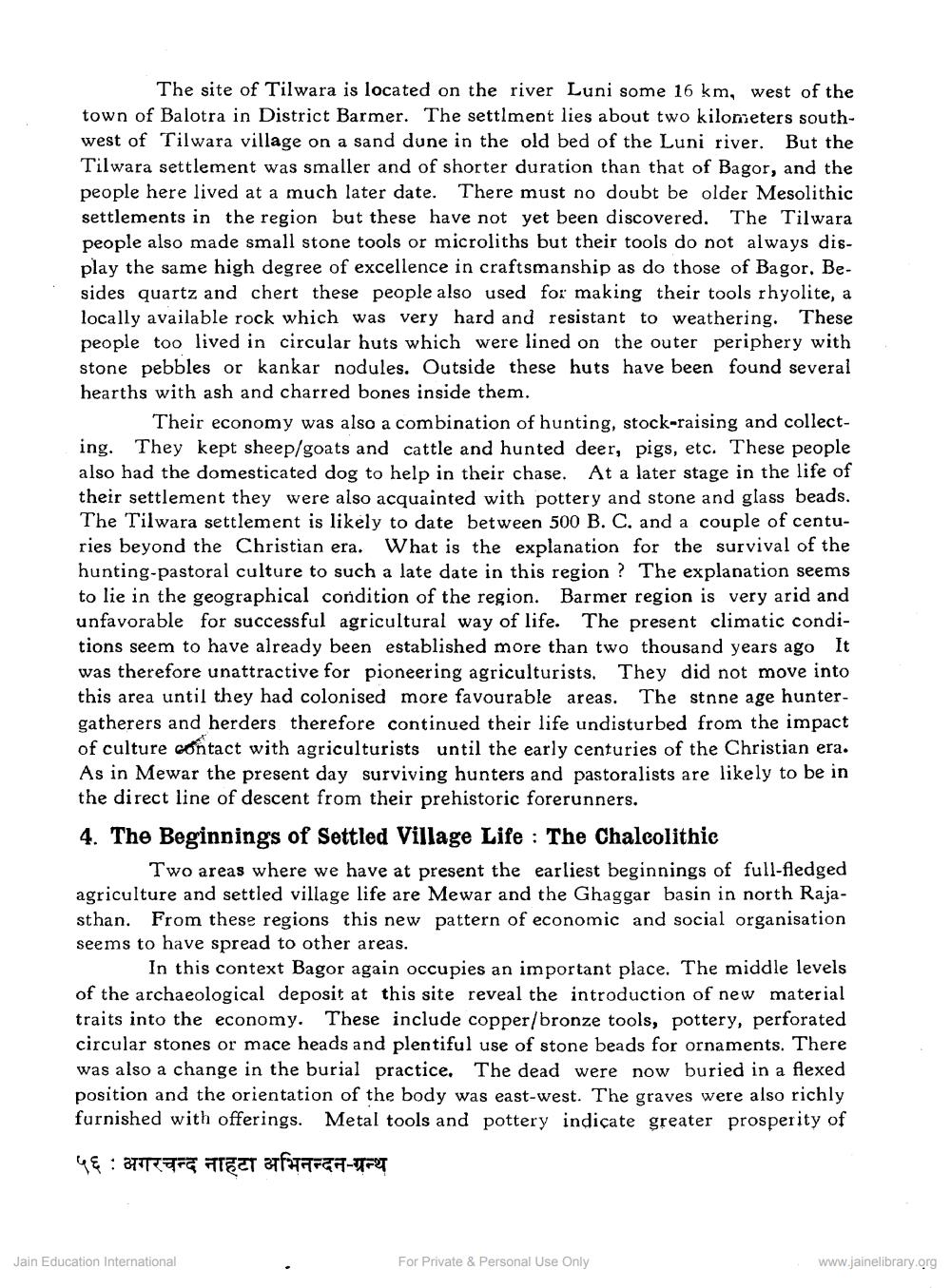Book Title: Prehistoric Background of Rajasthan Culture Author(s): V N Misra Publisher: Z_Agarchand_Nahta_Abhinandan_Granth_Part_2_012043.pdf View full book textPage 8
________________ The site of Tilwara is located on the river Luni some 16 km, west of the town of Balotra in District Barmer. The settlment lies about two kilometers southwest of Tilwara village on a sand dune in the old bed of the Luni river. But the Tilwara settlement was smaller and of shorter duration than that of Bagor, and the people here lived at a much later date. There must no doubt be older Mesolithic settlements in the region but these have not yet been discovered. The Tilwara people also made small stone tools or microliths but their tools do not always display the same high degree of excellence in craftsmanship as do those of Bagor. Besides quartz and chert these people also used for making their tools rhyolite, a locally available rock which was very hard and resistant to weathering. These people too lived in circular huts which were lined on the outer periphery with stone pebbles or kankar nodules. Outside these huts have been found several hearths with ash and charred bones inside them.. Their economy was also a combination of hunting, stock-raising and collecting. They kept sheep/goats and cattle and hunted deer, pigs, etc. These people also had the domesticated dog to help in their chase. At a later stage in the life of their settlement they were also acquainted with pottery and stone and glass beads. The Tilwara settlement is likely to date between 500 B. C. and a couple of centuries beyond the Christian era. What is the explanation for the survival of the hunting-pastoral culture to such a late date in this region? The explanation seems to lie in the geographical condition of the region. Barmer region is very arid and unfavorable for successful agricultural way of life. The present climatic conditions seem to have already been established more than two thousand years ago It was therefore unattractive for pioneering agriculturists. They did not move into this area until they had colonised more favourable areas. The stnne age huntergatherers and herders therefore continued their life undisturbed from the impact of culture contact with agriculturists until the early centuries of the Christian era. As in Mewar the present day surviving hunters and pastoralists are likely to be in the direct line of descent from their prehistoric forerunners. 4. The Beginnings of Settled Village Life: The Chaleolithic Two areas where we have at present the earliest beginnings of full-fledged agriculture and settled village life are Mewar and the Ghaggar basin in north Rajasthan. From these regions this new pattern of economic and social organisation seems to have spread to other areas. In this context Bagor again occupies an important place. The middle levels of the archaeological deposit at this site reveal the introduction of new material traits into the economy. These include copper/bronze tools, pottery, perforated circular stones or mace heads and plentiful use of stone beads for ornaments. There was also a change in the burial practice. The dead were now buried in a flexed position and the orientation of the body was east-west. The graves were also richly furnished with offerings. Metal tools and pottery indicate greater prosperity of ५६ : अगरचन्द नाहटा अभिनन्दन ग्रन्थ Jain Education International For Private & Personal Use Only www.jainelibrary.orgPage Navigation
1 ... 6 7 8 9 10 11 12 13 14 15 16 17 18 19
